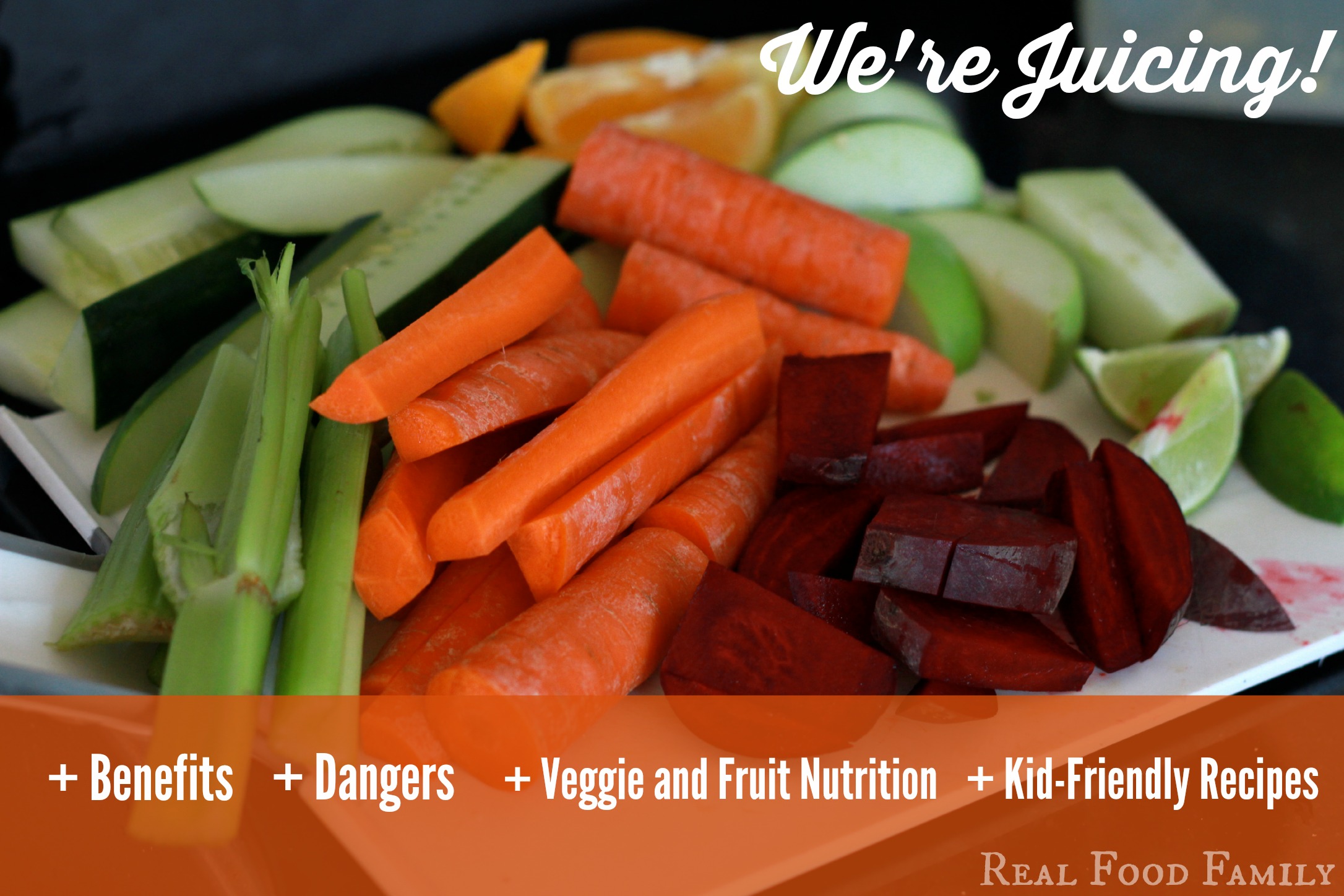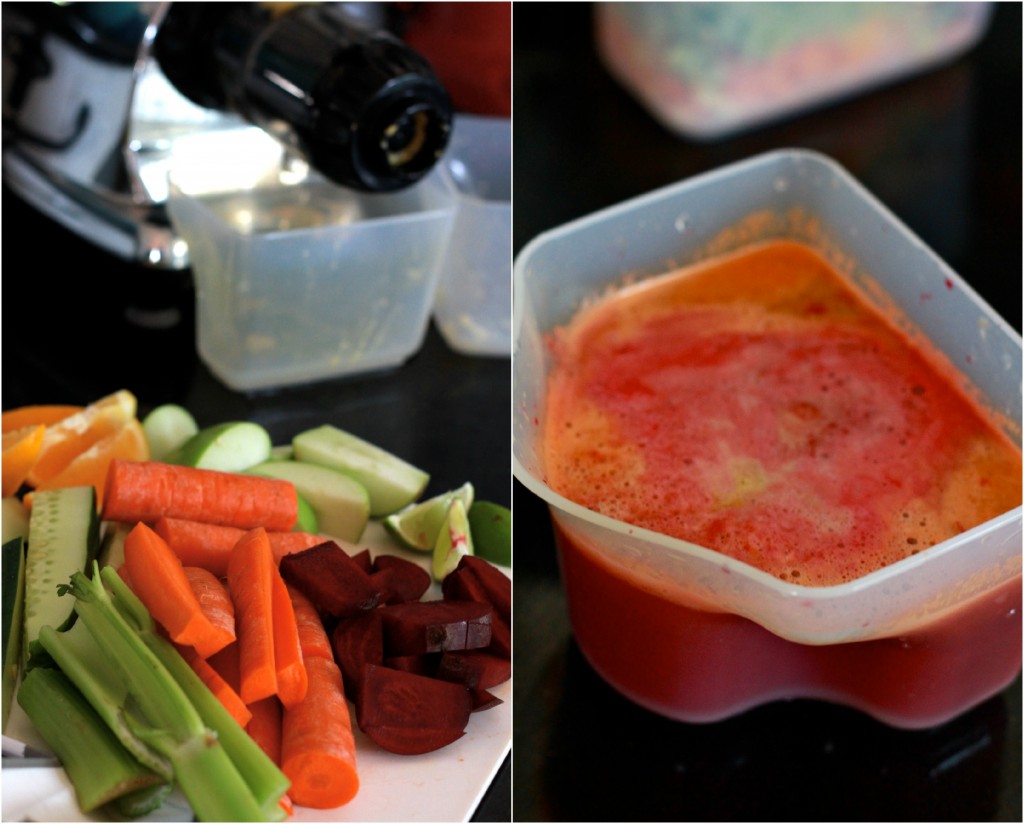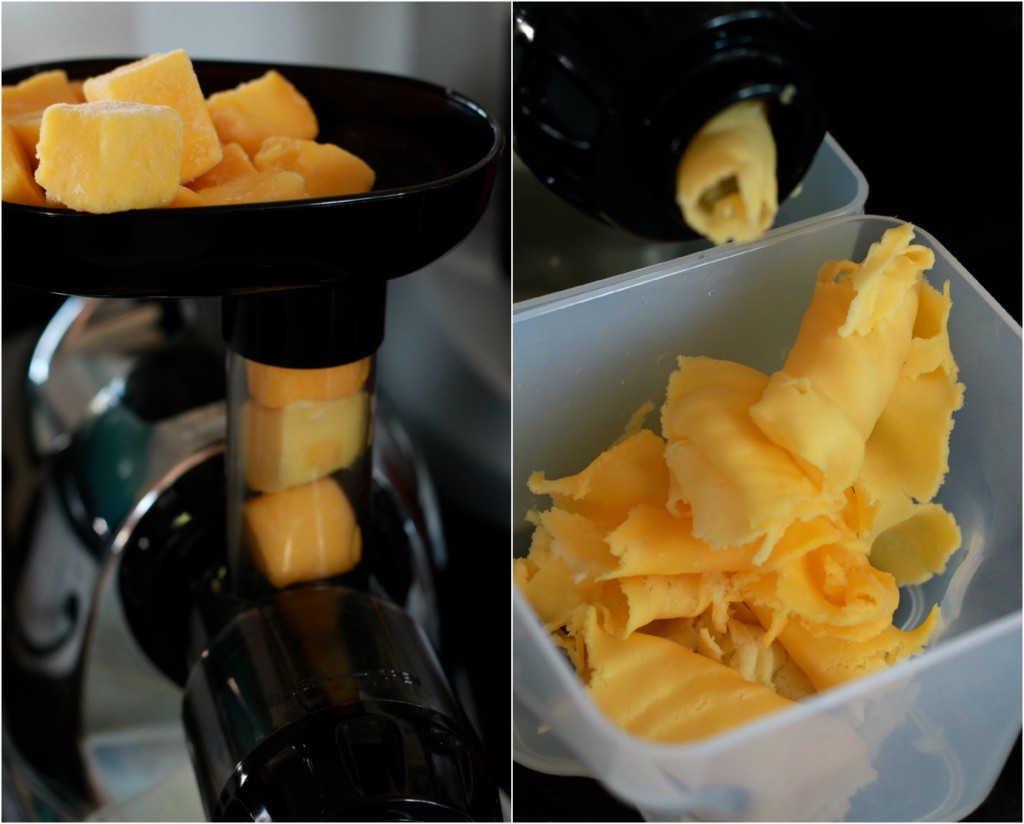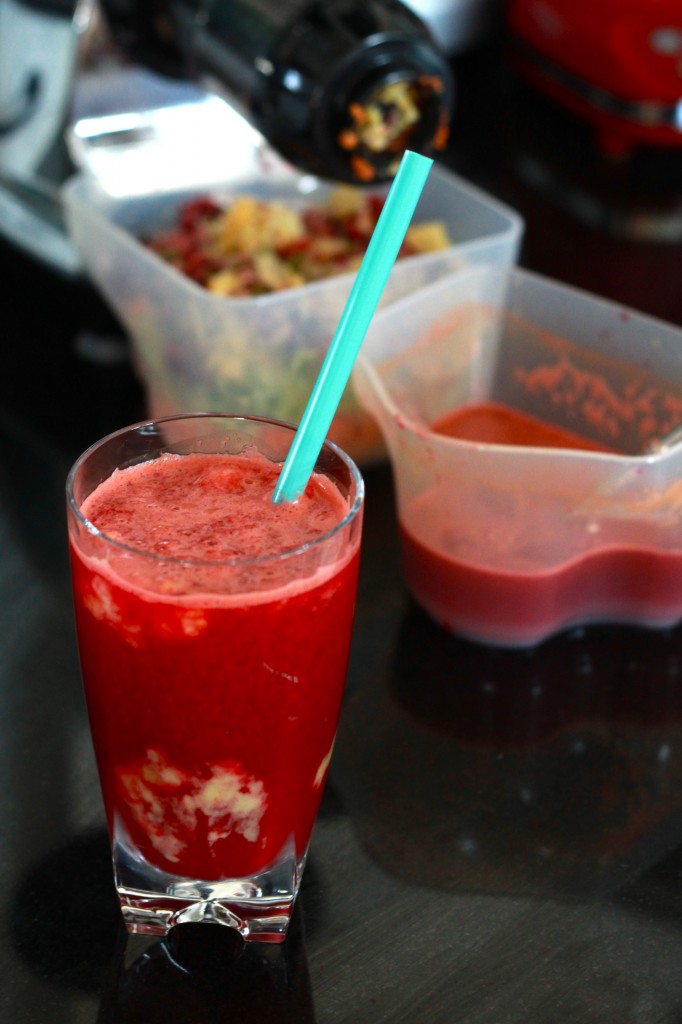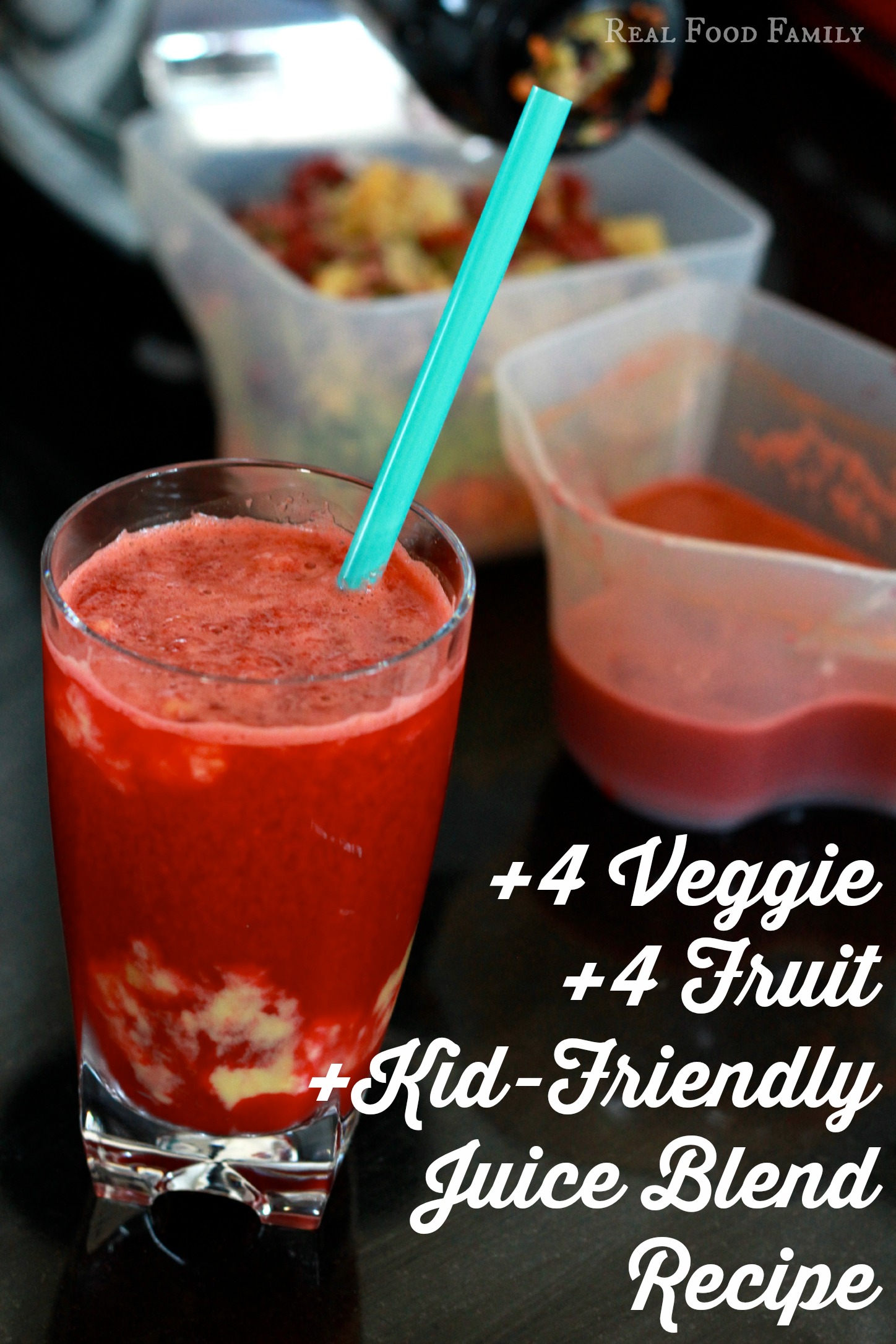This summer two very exciting things happened…
We had a BABY!
We also finally jumped on the juicing bandwagon. (Yes, the first was kind of WAY more important.)
Juicing vegetables and fruits can be an excellent way to get a blast of nourishing vitamins and minerals straight into the blood stream. Dr. Mercola states that juicing can:
- allow you to consume a healthier amount of vegetables in an efficient manner
- help you eat a wider variety of vegetables and fruit
- promote weight loss
- boost your immune system
- increase energy
- support brain health
Are you COOL enough?
I don’t know what life is like in your neck of the woods, but here in Southern California it seems like you’re only cool and really healthy if you juice. In fact, this pretentious attitude surrounding the “juicing world” is what kept me from juicing in the first place. I do try to avoid being that “I’m healthier than you because I drink expensive juice cocktails from the wheat-grass-smelling juice shop every day” kind of person.
Okay, that was a little judgmental. But I truly don’t believe you have to “juice” to be healthy. Juicing can be expensive– from the expensive juicer to the expensive organic produce. Juicing can produce a lot of unnecessary waste if the the pulp goes unused…although we feed it to our chickens. Juicing can be an unhealthy choice for people with health issues or who don’t have access to an abundance of organic vegetables and fruits.
Is Juicing Actually Healthy?
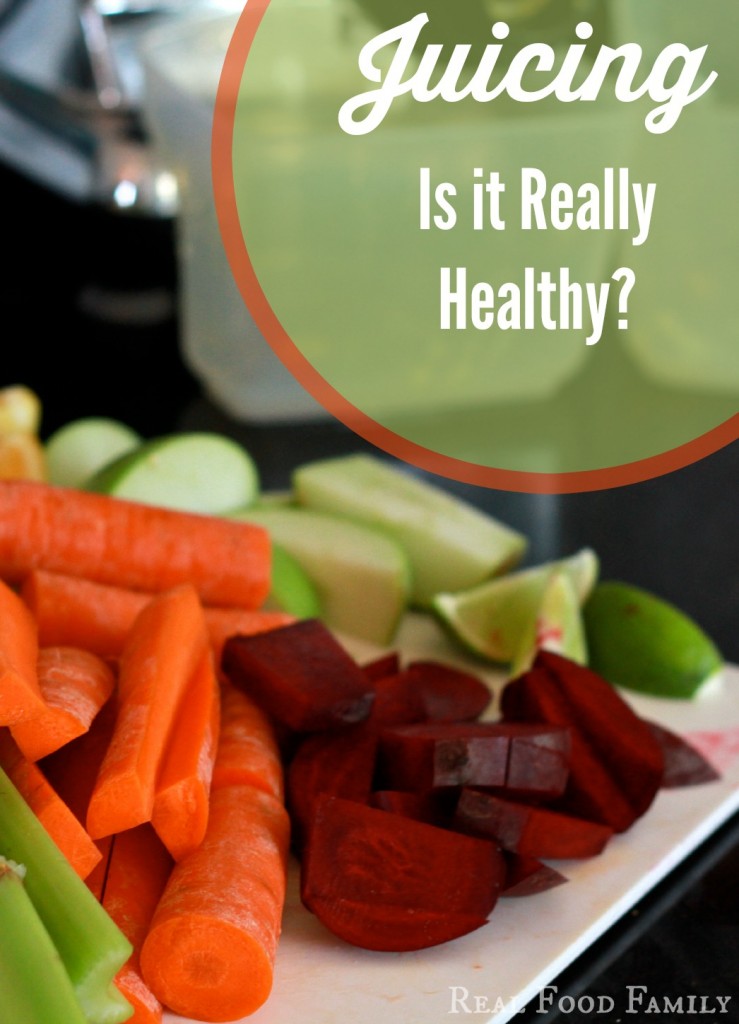
I’ve never been a fanatical supporter of juicing is because it can actually be very unhealthy. Besides the danger of consuming harmful chemicals if your fruits and veggies aren’t organic, fruits and vegetables are made up of almost entirely sugar. Regardless of what kind of sugar, when we’re talking about macro-nutrients, sugar is sugar, which is a carbohydrate, which has a dramatic impact on your blood sugar levels if you do not consume your carbohydrates with a fat and protein at the same time. For this reason, we only consume our juice concoctions with some fat or protein, like an egg with homemade mayonnaise or some slices of cheese and bites of meat.
Of course the organic produce we juice provides an array of essential vitamins and minerals, which are fabulously healthy, so as long as we always consume our juice with a side order of a fat and protein, we are keeping our blood sugar stable and enjoying the wonderful benefits of consuming a rainbow of colorful organic produce.
Another way that juicing can be unhealthy is if you’re consuming the wrong raw vegetables. Not all raw vegetables are good for you…or at least not all raw vegetables are good for everyone. For many people, raw vegetables (even juiced ones) are very difficult to digest and actually cause distress and damage in the intestinal tract. Some raw vegetables are not a good choice for people suffering from any level of hypothyroidism (which is very common in most people who have imbalanced blood sugar levels.)
Cruciferous vegetables, like broccoli, brussels sprouts, cauliflower, cabbage, collards, kale, and spinach are “goitrogenic”, especially when consumed raw. Goitrogens are able to disrupt normal thyroid function by inhibiting the body’s ability to use iodine, block the process by which iodine becomes the thyroid hormones thyroxine (T4) and triiodothyronine (T3), inhibit the actual secretion of thyroid hormone, and disrupt the peripheral conversion of T4 to T3. Juicing goitrogenic vegetables actually end up providing highly concentrated amounts of goiter-promoting ingredients. It’s best to consume these vegetables cooked instead of raw or in juiced form, unless you would benefit from consuming goitrogens due to hyperthyroidism.
Juicing The Right Way
Now that I got all the dangers of juicing out of the way, I can return to telling you how awesome juicing is…if you do it right. Remember all those benefits I mentioned at the beginning of this post?
Because I suffer from both hypo-adrenalism (which means I have to keep my blood sugar under control) and hypothyroidism, I have to be careful with juicing. I also want to be cautious with giving my kids juice for the same reasons. We choose fruits and vegetables that are not considered cruciferous and I typically try to dilute the juice so it’s not a fully concentrated attack on our blood sugar.
We like to juice with things like:
- Beets– Can help to cleanse, detoxify and support the liver and lower blood pressure.
- Carrots– Help to stimulate and improve overall liver function. May help reduce insulin resistance. Carrots are also a great source of potassium and selenium.
- Celery– Helps to cleanse the digestive system of uric acid.
- Cucumber– Cucumber is a wonderful natural diuretic, and helps with urination. It is helpful for kidney, pancreatic, liver and bladder disease. It contains the enzyme erepsin, which helps in the digestion of protein. Cucumber juice, together with carrot, lettuce and spinach juice, helps with hair growth, and cucumber and carrot juice are said to help alleviate the inflammation, swelling, and pain in joints and muscles caused by excessive uric acid. Cucumber juice is valuable against diseases of the teath and gums, and it’s high mineral content helps in preventing splitting of fingernails and toenails.
- Lime and Orange- High in vitamin C and anti-oxidants, lime supports the immune system as well as skin health, digestion, arthritis, and the kidneys and bladder.
- Apples– Apples contain an impressive list of nutrients, like vitamin C, beta-carotene, potassium, calcium, riboflavin, pyridoxine and thiamin, plus they are rich in anti-oxidants. Green apples are lower in sugar than red apples, plus they slow the disgestion of carbohydrates like breads, potatoes and sugars, and help to stimulate the pancreas.
*Special Trick #1: If you are juicing a lot of bitter greens and herbs, try adding a few slices of whole organic citrus (rind included) or ginger to your juice blend to add a strong flavor that balances the bitterness.
*Special Trick #2: Before we make our juice, I like to put some frozen mango chunks through the juicer. It doesn’t produce any juice, but pushes out a lovely little 100% mango sorbet that sweetens and freezes up our vegetable juice blends. **This will only work with a masticating juicer that can press frozen fruits and vegetables! See the next point below on choosing a juicer.
What Juicer Should I Use?
Before I bought my juicer, I read through this great article comparing juicers and helping buyers pick the one the best suits their needs. I decided that the best bang for my buck would be a masticating juicer, so I went with the most popular Omega J8006 Nutrition Center masticating juicer. I can juice almost anything (no bananas or avocado!), including frozen foods. I can use this to make baby food, frozen treats with frozen fruits, and even homemade pasta! I’m super duper happy with my juicer, so I suggest clicking my links to get your juicer and start juicing today! 🙂
Ingredients
- 3 carrots
- 2-3 celery stalks
- 1 beet root
- 1/2-1 cucumber
- 1/2-1 green apple
- 1/2 orange
- 1/2 lime
- 2 cups frozen mango, cut into small cubes (that will fit through juicer)- optional
Instructions
- Clean all ingredients and cut into small enough to fit through your juicer. If you are using the frozen mangoes, first press the mangos through the juicer into a large separate bowl or cup. Continue to juice all the remaining ingredients together. *Juice the whole slices of orange and lime- rind included, but seeds removed.

Final Note
Of Course Juicing isn’t for everyone, but the nutrition of vegetables and fruits juice is! If you are unable to make fresh juice for your family, I highly recommend using Juice Plus+ whole food nutritional supplements. Juice Plus+ daily capsules or chewables include 17+ fruits and vegetables. One adult serving is the equivalent of 16 ounces of juiced vegetables and fruit, all dehydrated at low temperatures to preserve the nutritional content of the produce. Kids can even get Juice Plus+ for FREE, but you have to contact me to get signed up for that. Click here to learn more about the benefits and research supporting Juice Plus+.


